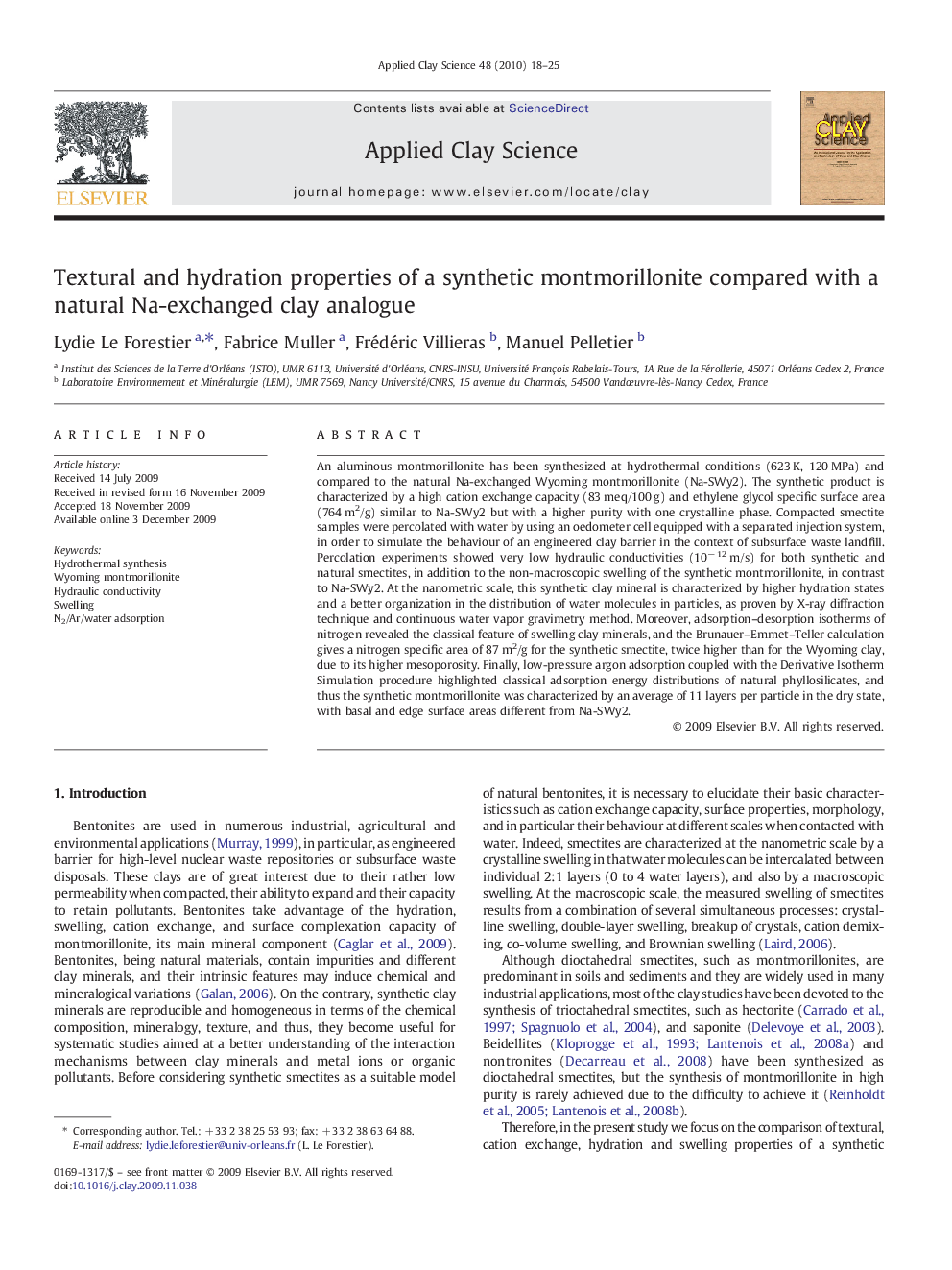| Article ID | Journal | Published Year | Pages | File Type |
|---|---|---|---|---|
| 1696035 | Applied Clay Science | 2010 | 8 Pages |
An aluminous montmorillonite has been synthesized at hydrothermal conditions (623 K, 120 MPa) and compared to the natural Na-exchanged Wyoming montmorillonite (Na-SWy2). The synthetic product is characterized by a high cation exchange capacity (83 meq/100 g) and ethylene glycol specific surface area (764 m2/g) similar to Na-SWy2 but with a higher purity with one crystalline phase. Compacted smectite samples were percolated with water by using an oedometer cell equipped with a separated injection system, in order to simulate the behaviour of an engineered clay barrier in the context of subsurface waste landfill. Percolation experiments showed very low hydraulic conductivities (10− 12 m/s) for both synthetic and natural smectites, in addition to the non-macroscopic swelling of the synthetic montmorillonite, in contrast to Na-SWy2. At the nanometric scale, this synthetic clay mineral is characterized by higher hydration states and a better organization in the distribution of water molecules in particles, as proven by X-ray diffraction technique and continuous water vapor gravimetry method. Moreover, adsorption–desorption isotherms of nitrogen revealed the classical feature of swelling clay minerals, and the Brunauer–Emmet–Teller calculation gives a nitrogen specific area of 87 m2/g for the synthetic smectite, twice higher than for the Wyoming clay, due to its higher mesoporosity. Finally, low-pressure argon adsorption coupled with the Derivative Isotherm Simulation procedure highlighted classical adsorption energy distributions of natural phyllosilicates, and thus the synthetic montmorillonite was characterized by an average of 11 layers per particle in the dry state, with basal and edge surface areas different from Na-SWy2.
